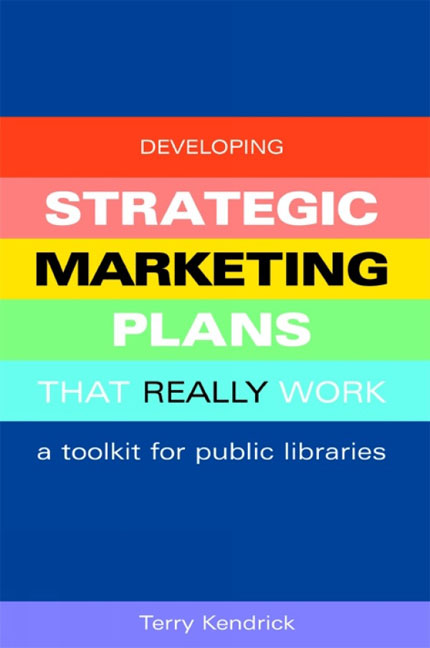Book contents
- Frontmatter
- Contents
- Acknowledgements
- Introduction
- 1 Strategic marketing planning for public libraries: an introduction
- 2 Ambition as the basis for marketing planning
- 3 Making sense of the market for public library services
- 4 Creating segment-specific value propositions for users and non-users
- 5 Priorities: making sound choices
- 6 Clear objectives and winning strategies
- 7 Attention-grabbing marketing communications
- 8 Implementation and quick progress
- Appendix Twenty fast-track templates
- Select bibliography
- Index
7 - Attention-grabbing marketing communications
Published online by Cambridge University Press: 08 June 2018
- Frontmatter
- Contents
- Acknowledgements
- Introduction
- 1 Strategic marketing planning for public libraries: an introduction
- 2 Ambition as the basis for marketing planning
- 3 Making sense of the market for public library services
- 4 Creating segment-specific value propositions for users and non-users
- 5 Priorities: making sound choices
- 6 Clear objectives and winning strategies
- 7 Attention-grabbing marketing communications
- 8 Implementation and quick progress
- Appendix Twenty fast-track templates
- Select bibliography
- Index
Summary
In this chapter you will find ideas on how to market your offers to your market segments through traditional and modern marketing communications approaches. You will also find principles of effective promotion and a brief discussion of websites as a marketing communication.
Having defined our ambition (Chapter 2), studied the market for public library services in our authority (Chapter 3), segmented the user and nonuser base and created value propositions for each (Chapter 4), looked at the strategic priorities for activity according to an understanding of what each segment can contribute towards meeting our performance measures during the planning period (Chapter 5), and devised marketing objectives and strategies for the planning period (Chapter 6), we can now move to the area which is often the first thought of a public librarian when thinking of marketing – communication and promotions.
Successful communications
Remember that there are five basic elements to successful communications: the communicator sending the message; the message itself; the medium used to convey the message; the intended recipient of the message; and feedback to ensure the message has been received and has been understood in the way it was intended. This is an important process to manage, and is not simply a case of the public librarian devising publicity materials, distributing them in the most economical way possible and then standing back to receive the expected rush of new recruits to the library.
If we have undertaken all of the previous work in this book well, then the messages we wish to broadcast will be clear and well targeted. Although there will be some general awareness-building messages and supporting advertising and publicity materials it is likely that the more powerful messages will be based on offers to specific segments, offers which will help these people move forward in their journey to wherever they wish to go in their lives. When we have devised the right message some thought must be given to how it should be conveyed (on paper or in person, for instance) and how we will be sure that the message has been received and understood.
- Type
- Chapter
- Information
- Developing Strategic Marketing Plans That Really WorkA Toolkit for Public Libraries, pp. 137 - 167Publisher: FacetPrint publication year: 2006



